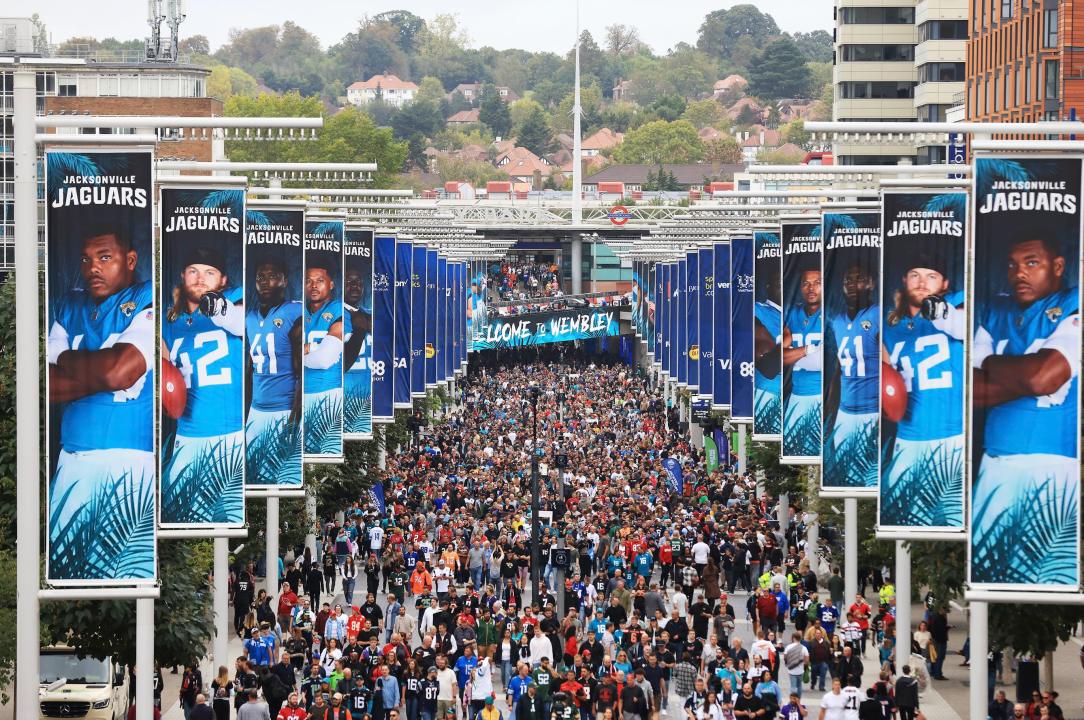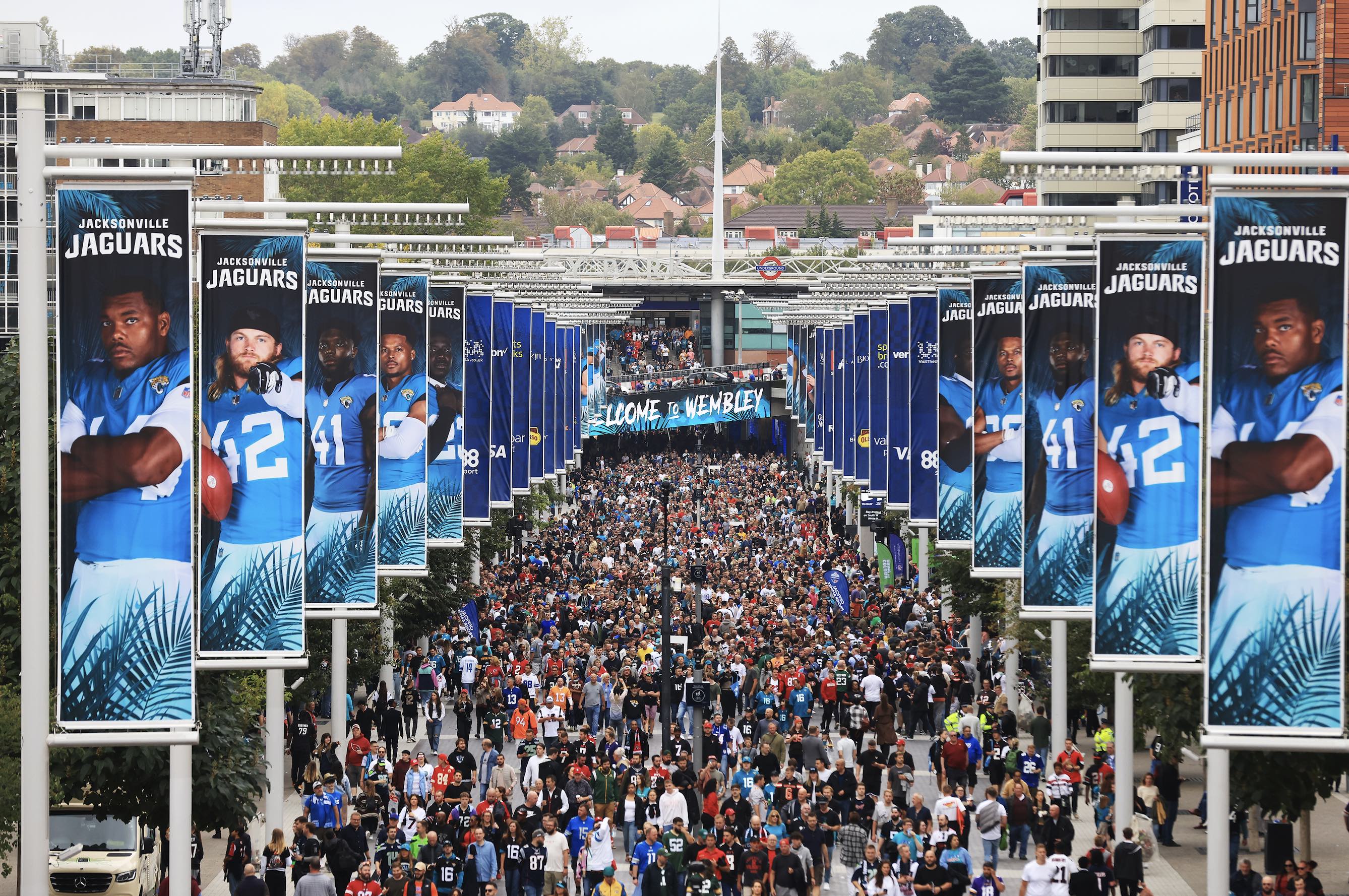This afternoon, just shy of 75,000 fans of American football will flood in to watch the Atlanta Falcons take on the Indianapolis Colts, in what is set to be the Colts’ largest attendance for a home game this season. A few weeks ago, more than 86,000 turned out to watch the Jacksonville Jaguars face the LA Rams in what was the Jaguars’ best-attended home game this year. The most surprising thing about this? Both games were taking place more than 4,000 miles from the NFL’s heartland – one in Berlin, one in London.
Recently, Sean Thomas claimed on Spectator Life that America has failed to export its ‘laughable’ sports. As a British writer who has covered five Super Bowls and written thousands of words on the NFL, I come not to defend American football as a sport – it can do that itself (have you seen the size of those guys?) – but to question Sean’s claim that when it comes to America ‘No one likes to watch or play your sports’.
The numbers speak for themselves. On this side of the Atlantic, more than four million people watched Super Bowl LV live on Sky Sports and BBC in 2020; four years later a global TV audience of 62.5 million watched the Kansas City Chiefs beat the San Francisco 49ers in Super Bowl LVIII. There are three million supporters who have attended the 42 regular-season NFL games played in London since 2007, when Wembley and Tottenham are turned into riots of colour by fans from all over Europe and beyond.
In the past three years Germany has staged games – with Berlin today becoming the third German host city – as well as Mexico, Brazil and Ireland, to make it 55 times that the NFL has been inclined to take its billion-dollar product overseas. That’s not a gamble you take on a lukewarm market.
The array of team jerseys at these games – and the stories behind each person’s fandom – reflects the depth of passion that people all over the world have for a sport that blends artistry and brutality better than any other. Plenty of youngsters in Britain and beyond are so enthralled by the game that they even want to make a career out of it. The NFL has given them an opportunity with the NFL Academy in Loughborough, which for academic year 2025-26 is educating and training 68 athletes from 20 different countries. That’s the same number of countries represented at the most recent men’s Rugby World Cup. Another NFL Academy opened in Australia in September.
To bolster his assertion that American sports are ‘overblown and mediocre’, Sean maintains that Britain is ‘the world’s greatest nation, by a distance, at inventing and/or codifying sport’. I can understand people not enjoying American sports, but to argue that British sports have some innate superiority because they were imposed on some subjugated corners of the Earth seems misguided at best. There’s a reason why cricket and rugby are played by a small group of Commonwealth countries – they are not accessible, by no means lending themselves to casual pick-up games in the way that baseball, basketball and, to an extent, American football do.
Berlin today becomes the third German host city – making it 55 times that the NFL has been inclined to take its billion-dollar product overseas. That’s not a gamble you take on a lukewarm market
As for the ‘fluent brutality of rugby’ – I’m not sure anyone could accuse the game of being fluent for some time. Scoring tries is anathema to the modern game, with the aim appearing to be winning penalties so the ball can either be booted into touch or kicked for goal. The ‘kick and clap’ moniker is well-earned. Research suggests that in a game of rugby union the ball is actually in play for only about 35 mins of the allotted 80, while the time from first to final whistle (thanks not just to half-time but Television Match Officials, injuries and so on) is now two hours and ten minutes. Don’t look now but the NFL-isation of rugby is well under way.
Similarly the English have a tendency to balk at any suggestion that cricket and baseball are the same, and point to the supposed superiority of five-day Tests as a case in point. But it is hard to criticise baseball for not being like cricket when about 80 per cent of professional cricket these days is not even that kind of cricket. At least the Americans have the good grace not to make money-chasing changes to a game that has survived in its recognisable form – with occasional tweaks to adapt to changes in bat technology – for generations.
One thing that has changed – like the NFL – is the global expansion. Unlike the NFL, Major League Baseball, hindered by the logistics of a 162-game season and derailed by Covid and other sporting clashes at the home of West Ham United, is yet to fully plant its flag in the UK. But there have been six games played here (two each in 2019, 2023 and 2024), with almost 350,000 tickets sold for those at the London Stadium.
Australia, Japan and Mexico have hosted games, and those countries also have professional leagues. It is by no means just America’s pastime – a fact of which we were reminded last weekend when a dramatic World Series ended with the LA Dodgers emerging victorious from a gruelling seven-game slugathon against the Toronto Blue Jays. Yoshinobu Yamamoto was named the series’ Most Valuable Player. He comes from Japan, so too his teammate Shohei Ohtani – widely regarded as the best in his sport at the moment.

As for basketball and ice hockey, I don’t know how popular the NHL is across the globe – but maybe those countries where it might have caught on are already too busy engrossed in their own leagues: Germany, Sweden, Czechia, Finland, Switzerland, Russia and the UK to name but a few all have championships. It is just that, like in so many other areas, the American version is bigger and better.
And yes, you have to be tall to play professional basketball, which Sean says makes it too ‘niche’. But by the same token you have to be very, very good to play professional football. The country is littered with bang average footballers slicing a ball into a nearby pond every weekend, just as in my local park there are a number of basketball half-courts filled with players of all ages and heights getting their weekly fix. But they are not alone – the International Basketball Federation, FIBA, estimates that 450 million play the sport competitively or casually.
I appreciate that there is differing appeal in the playing of these sports and in the watching – both on TV and in person – but I suggest Sean Thomas gives them another chance. He doesn’t even need to go as far as the US to do so.








Comments